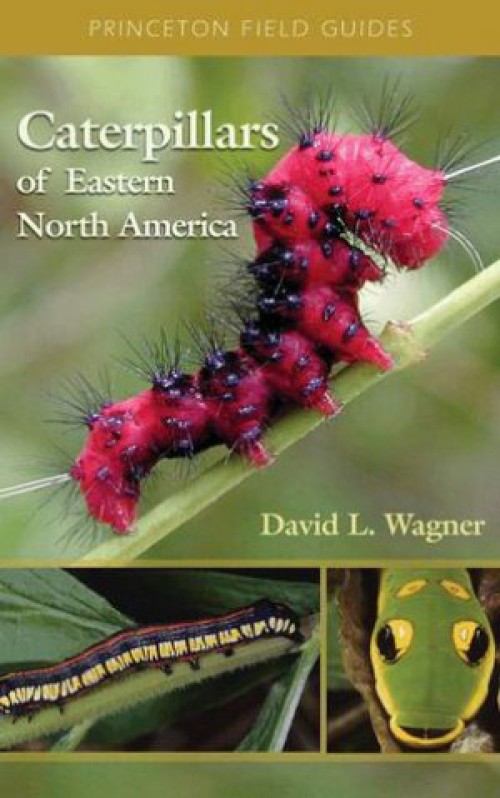by By David L. Wagner
Princeton University Press, 2005
It’s easy to speak of the elegance and charm of butterflies and moths: their gift of flight, their role as pollinators, their place in poetry, their gossamer beauty. But save some respect for caterpillars.
The plump, crawling larval form of Lepidoptera is in many respects the dominant stage of the insect, an eating machine with remarkable talents. Caterpillars can impersonate snakes and twigs and bird droppings; they can survive our winter, defoliate forests, spin silk, be food to warblers (and humans), and even display supremely shocking colors and patterns.
And now, at long last, they have their own field guide. David Wagner’s Caterpillars of Eastern North America joins the growing suite of masterpiece field guides to flowering, flying, fur-bearing, and now crawling organisms of the Northeast.
This book is a hybrid of a field guide and reference manual. It begins with a concise introduction to caterpillars: morphology, life cycle, ecology, and conservation. And for the child in us all, Wagner offers sage advice on finding and rearing these insects from egg to adult, as well as a rich list of “caterpillar projects” for schools, nature centers, and universities.
No one, not even the amazing Wagner, who is associate professor of ecology and evolutionary biology at the University of Connecticut, can be expected to know, let alone photograph in a lifetime, the 5,000 or so species of butterflies and moths east of the Mississippi River. The guide features nearly 700 familiar and findable species. Most reside on their own page, replete with one or more exquisite photographs.
Here in these photos is a lesson in evolution. The caterpillar of the moth called curved-lined angle (Digrammia continuata) looks precisely – and strategically – like the northern white-cedar vegetation on which it feeds. The Baltimore checkerspot (Euphydryas phaeton) caterpillar, bright orange and black, has an arsenal of medieval spines that shouts “don’t mess with me” to any would-be predator. And the spiny oak slug (Euclea delphinii) looks like a cross between a caterpillar and a fireworks show.
The written account for each species includes help with identification, range of occurrence (no maps), common food plants, a small photograph of the adult, and a heavy helping of remarks. The remarks section, caterpillar wisdom from Wagner’s passion for this life stage (and access to scientific literature), makes for delightful reading, like Roger Tory Peterson issuing tidbits on the lives and secrets of birds.
Species in this guide are arranged by family. There are no keys or shortcuts to help identify a given caterpillar. But that’s okay. This book is a page-turner. If you think you know butterflies and moths, get acquainted with the complexities of caterpillars and their world – and then learn your lesson in humility.


